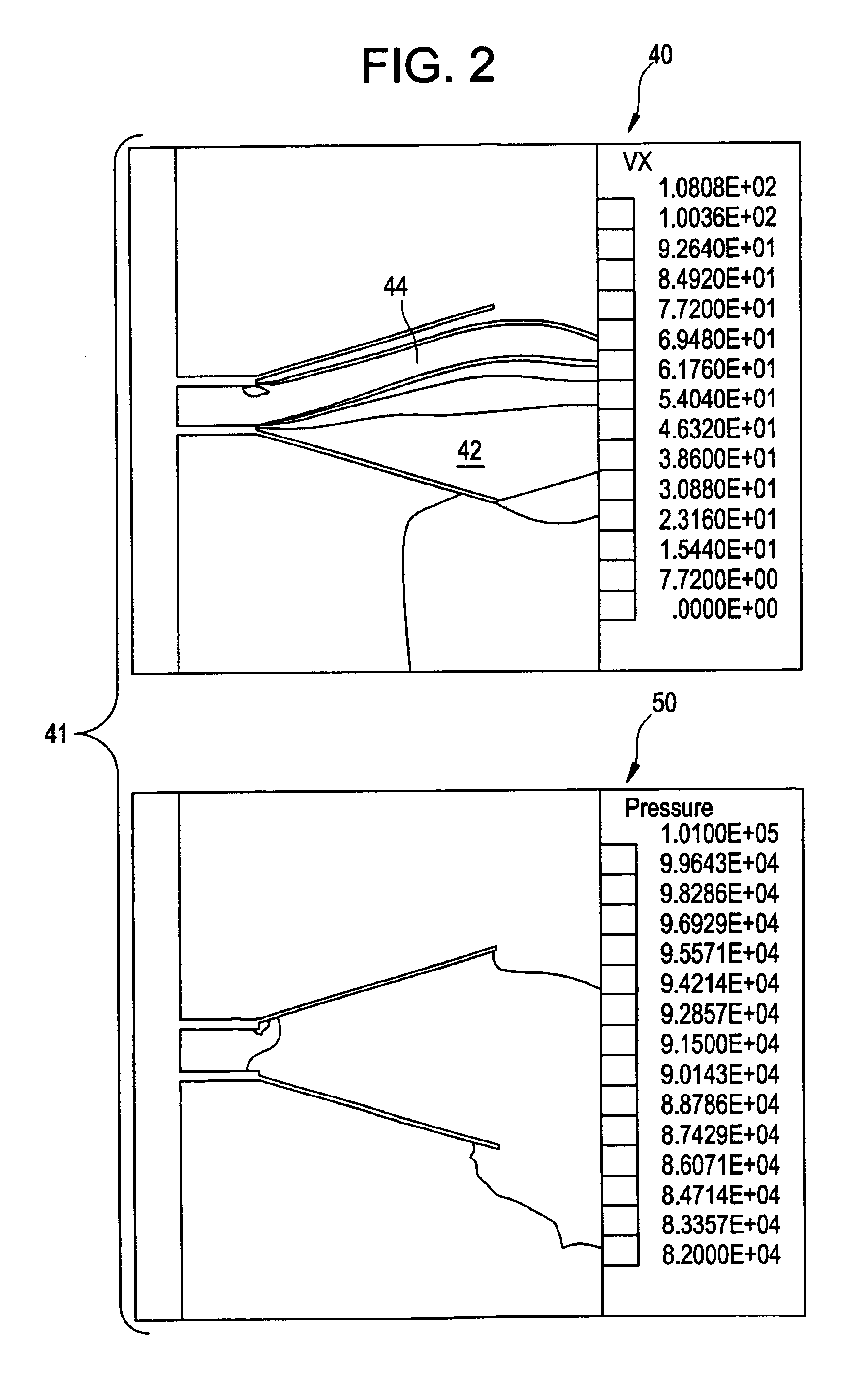Fluidic actuation for improved diffuser performance
a technology of fluidic actuation and diffuser, which is applied in the direction of wind motors with parallel air flow, wind motors with perpendicular air flow, combustion air/fuel air treatment, etc. it can solve the problem of limiting the maximum amount of work that can be extracted, limiting the performance of steam turbine exhaust systems, and limiting the exhaust pressure recovery coefficient to a value of 0.25-0.3
- Summary
- Abstract
- Description
- Claims
- Application Information
AI Technical Summary
Benefits of technology
Problems solved by technology
Method used
Image
Examples
Embodiment Construction
[0043]This design employs fluidic actuation to allow turbine diffusers to be designed with one or all of the following attributes: for a given value of area ratio, design shorter diffusers to reduce cost and minimize turbine length; for a given value of diffuser length, increase the expansion angle (area ratio) to improve diffuser performance and increase turbine efficiency; retrofit fluidic actuators to existing diffusers that have separated flow to improve performance at all operating conditions (e.g. full load and part load).
[0044]By applying fluidic actuation to a separated diffuser flow, it is shown below that exhaust diffuser pressure recovery can be significantly improved at different operating conditions.
[0045]A description of a fluidic actuating scheme, designed to improve diffuser performance, may be given in reference to an idealized two-dimensional diffuser geometry. Results of numerical flow simulations are discussed below. For the cases studied, the main diffuser flow ...
PUM
 Login to View More
Login to View More Abstract
Description
Claims
Application Information
 Login to View More
Login to View More - R&D
- Intellectual Property
- Life Sciences
- Materials
- Tech Scout
- Unparalleled Data Quality
- Higher Quality Content
- 60% Fewer Hallucinations
Browse by: Latest US Patents, China's latest patents, Technical Efficacy Thesaurus, Application Domain, Technology Topic, Popular Technical Reports.
© 2025 PatSnap. All rights reserved.Legal|Privacy policy|Modern Slavery Act Transparency Statement|Sitemap|About US| Contact US: help@patsnap.com



